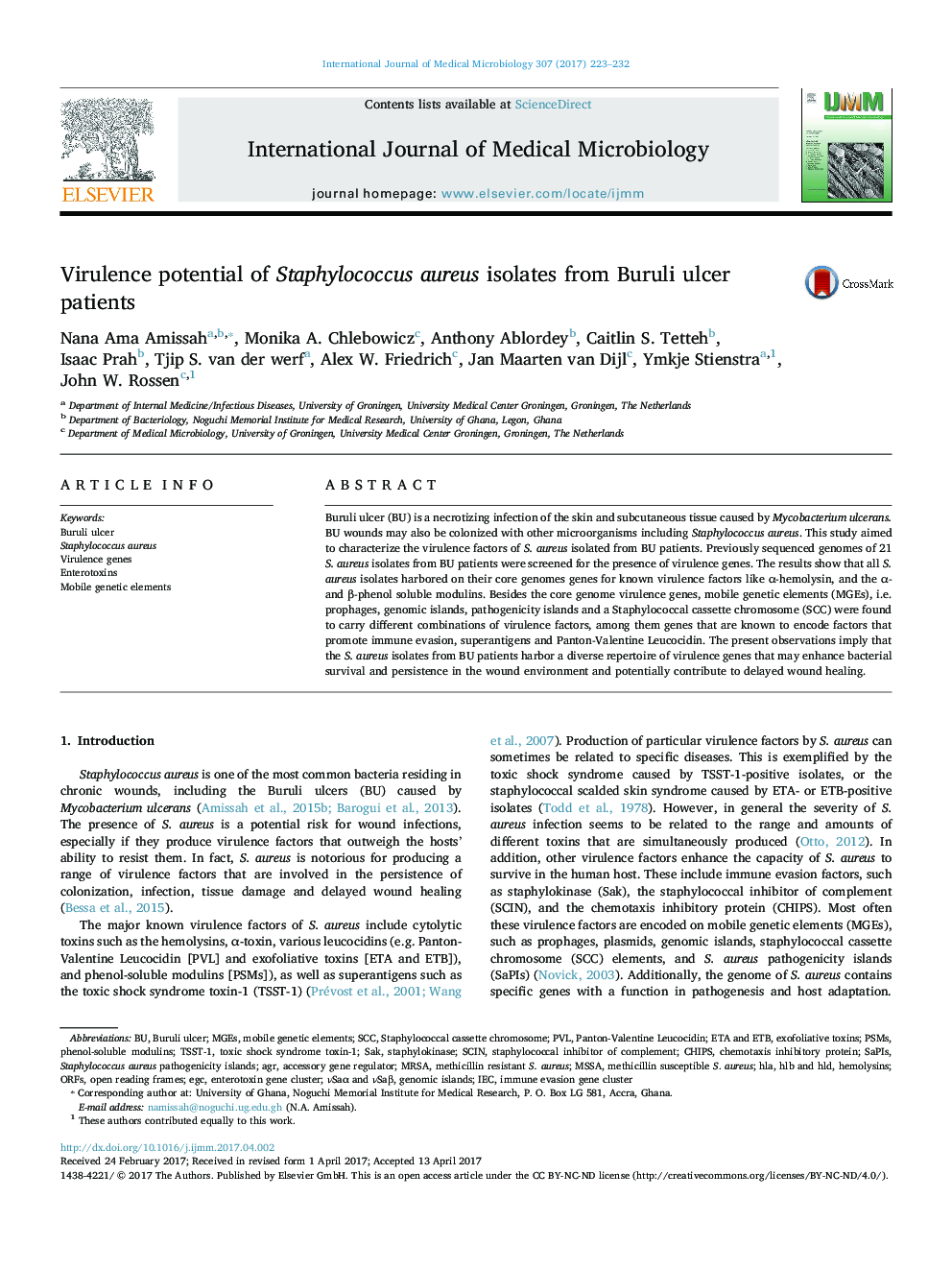| Article ID | Journal | Published Year | Pages | File Type |
|---|---|---|---|---|
| 5517787 | International Journal of Medical Microbiology | 2017 | 10 Pages |
Buruli ulcer (BU) is a necrotizing infection of the skin and subcutaneous tissue caused by Mycobacterium ulcerans. BU wounds may also be colonized with other microorganisms including Staphylococcus aureus. This study aimed to characterize the virulence factors of S. aureus isolated from BU patients. Previously sequenced genomes of 21 S. aureus isolates from BU patients were screened for the presence of virulence genes. The results show that all S. aureus isolates harbored on their core genomes genes for known virulence factors like α-hemolysin, and the α- and β-phenol soluble modulins. Besides the core genome virulence genes, mobile genetic elements (MGEs), i.e. prophages, genomic islands, pathogenicity islands and a Staphylococcal cassette chromosome (SCC) were found to carry different combinations of virulence factors, among them genes that are known to encode factors that promote immune evasion, superantigens and Panton-Valentine Leucocidin. The present observations imply that the S. aureus isolates from BU patients harbor a diverse repertoire of virulence genes that may enhance bacterial survival and persistence in the wound environment and potentially contribute to delayed wound healing.
